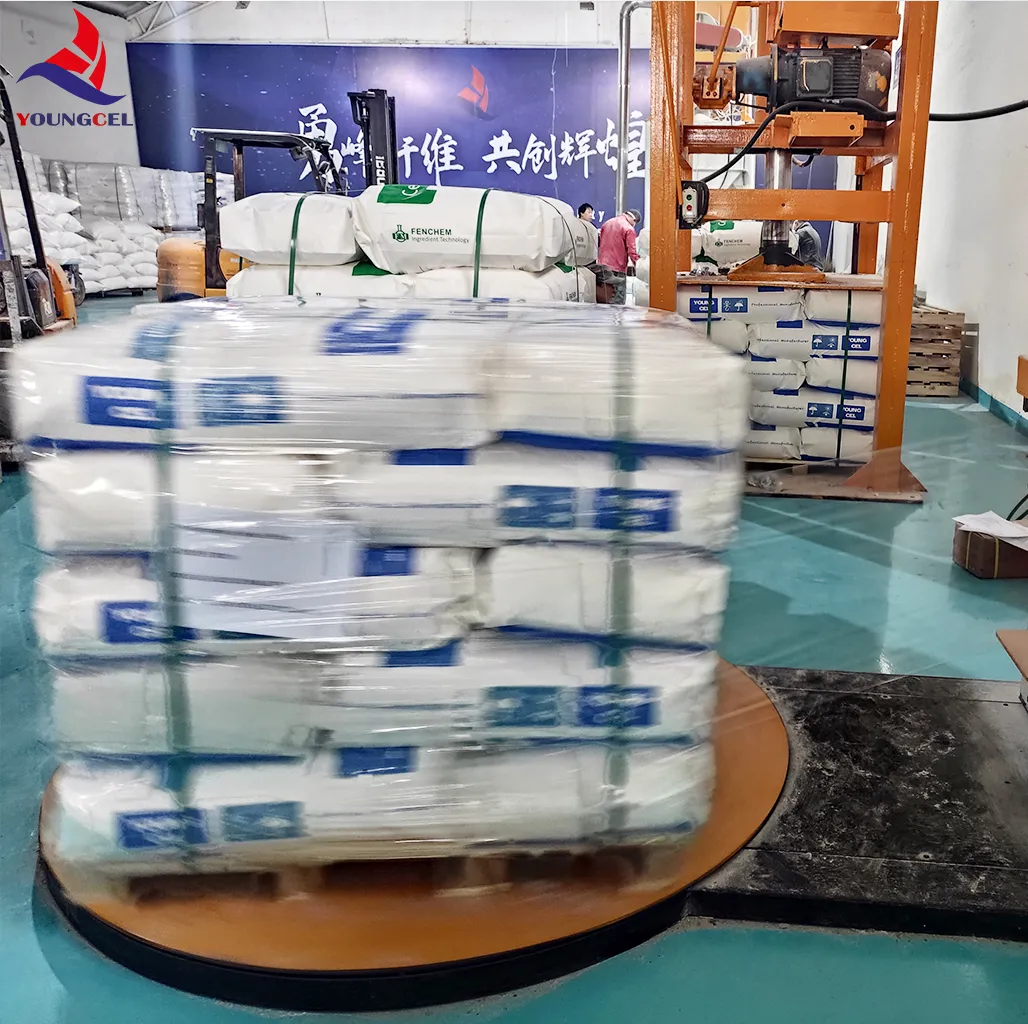HPMC An Essential Polymer in the Modern World
Hydroxypropyl methylcellulose (HPMC) is a non-ionic, water-soluble polymer derived from cellulose, a natural polymer found in the cell walls of plants. Its unique properties have garnered considerable attention across various industries, particularly in pharmaceuticals, construction, food production, and cosmetics. This article explores the significance, applications, and benefits of HPMC, highlighting its importance in modern technology and daily life.
What is HPMC?
HPMC is synthesized through the modification of cellulose, achieved by reacting cotton or wood pulp with propylene oxide and methyl chloride. The resulting polymer is characterized by its ability to dissolve in cold water, forming a viscous gel that retains its properties under a range of conditions. The degree of hydroxypropyl and methyl substitution can be altered to tailor the polymer's properties to specific applications, making HPMC a versatile ingredient.
Applications in Pharmaceuticals
One of HPMC's most significant uses is in the pharmaceutical industry. It serves as a crucial excipient in drug formulation, aiding in the production of controlled-release tablets and capsules. HPMC's viscosity and gel-forming abilities allow it to enhance the bioavailability of active ingredients while providing a stable medium for drug delivery. Furthermore, its non-toxic and biodegradable nature makes it an ideal choice for patients requiring medications, ensuring safety and efficient therapeutic action.
In addition to drug formulations, HPMC is utilized as a coating agent for tablets and pellets, improving taste masking and protecting sensitive substances from environmental degradation. The polymer’s ability to retain moisture also plays a vital role in maintaining the stability of pharmaceutical products during storage and transportation.
Construction and Building Materials
In the construction industry, HPMC is incorporated into various building materials, including mortar, plaster, and joint compounds. Its properties contribute to improved workability, adhesion, and water retention in these materials, making it essential for construction projects. HPMC enhances the performance of cement-based products by providing a smoother application surface, reducing the risk of cracks and ensuring a longer-lasting finish.
hpmc cellulose

Additionally, HPMC's hydrophilic nature helps to control the setting time of mortars and plasters, allowing for better adjustments during construction. This feature is particularly beneficial in large-scale projects where time management is crucial, helping workers to achieve optimal results.
Culinary Uses
HPMC has also found its way into the food industry, where it acts as a thickening agent, emulsifier, and stabilizer. Its ability to form gels contributes to the texture and mouthfeel of various food products, enhancing the overall sensory experience for consumers. From salad dressings to ice creams, HPMC plays a role in maintaining product consistency and preventing separation.
Moreover, HPMC is gaining popularity in the burgeoning field of plant-based and alternative food products. Its properties can help mimic texture and improve the structure of meat alternatives, catering to the growing demand for vegetarian and vegan options.
Cosmetics and Personal Care
In the realm of cosmetics, HPMC is a common ingredient in a variety of products, including lotions, creams, and gels. It acts as a thickening agent, allowing for desired viscosity and texture in formulations. Additionally, HPMC's film-forming properties make it an excellent choice for products like hair gels and styling aids, providing hold and structure without leaving residues.
The polymer’s compatibility with numerous other ingredients enhances its versatility, making it suitable for a broad range of cosmetic applications. Given the rise of natural and organic beauty products, HPMC’s plant-derived origin aligns well with consumer preferences for safe and environmentally friendly formulations.
Conclusion
Hydroxypropyl methylcellulose is an indispensable polymer with a broad spectrum of applications across various industries. Its unique properties make it ideal for enhancing product performance and consumer experience in pharmaceuticals, construction, food production, and cosmetics. As industries continue to evolve, HPMC will likely play an increasingly important role in innovation and the development of sustainable solutions. Embracing the potential of HPMC can lead to advancements that benefit both consumers and industries alike, highlighting the polymer's lasting significance in the modern world.
-
Rdp Powder: Key Considerations for Wholesalers in the Building Materials IndustryNewsJul.08,2025
-
Key Considerations for Wholesalers: Navigating the World of Hpmc - Based ProductsNewsJul.08,2025
-
Hpmc Detergent: Key Considerations for WholesalersNewsJul.08,2025
-
Key Considerations for Wholesalers: China Hpmc For Tile Adhesive, Coating Additives, Concrete Additives, and MoreNewsJul.08,2025
-
Crucial Considerations for Wholesalers: Navigating the World of Construction MaterialsNewsJul.08,2025
-
Key Considerations for Wholesalers Sourcing Additive For Cement, Additive For Concrete, Additive For Putty from Additive Manufacturer Shijiazhuang Gaocheng District Yongfeng Cellulose Co., Ltd.NewsJul.08,2025




